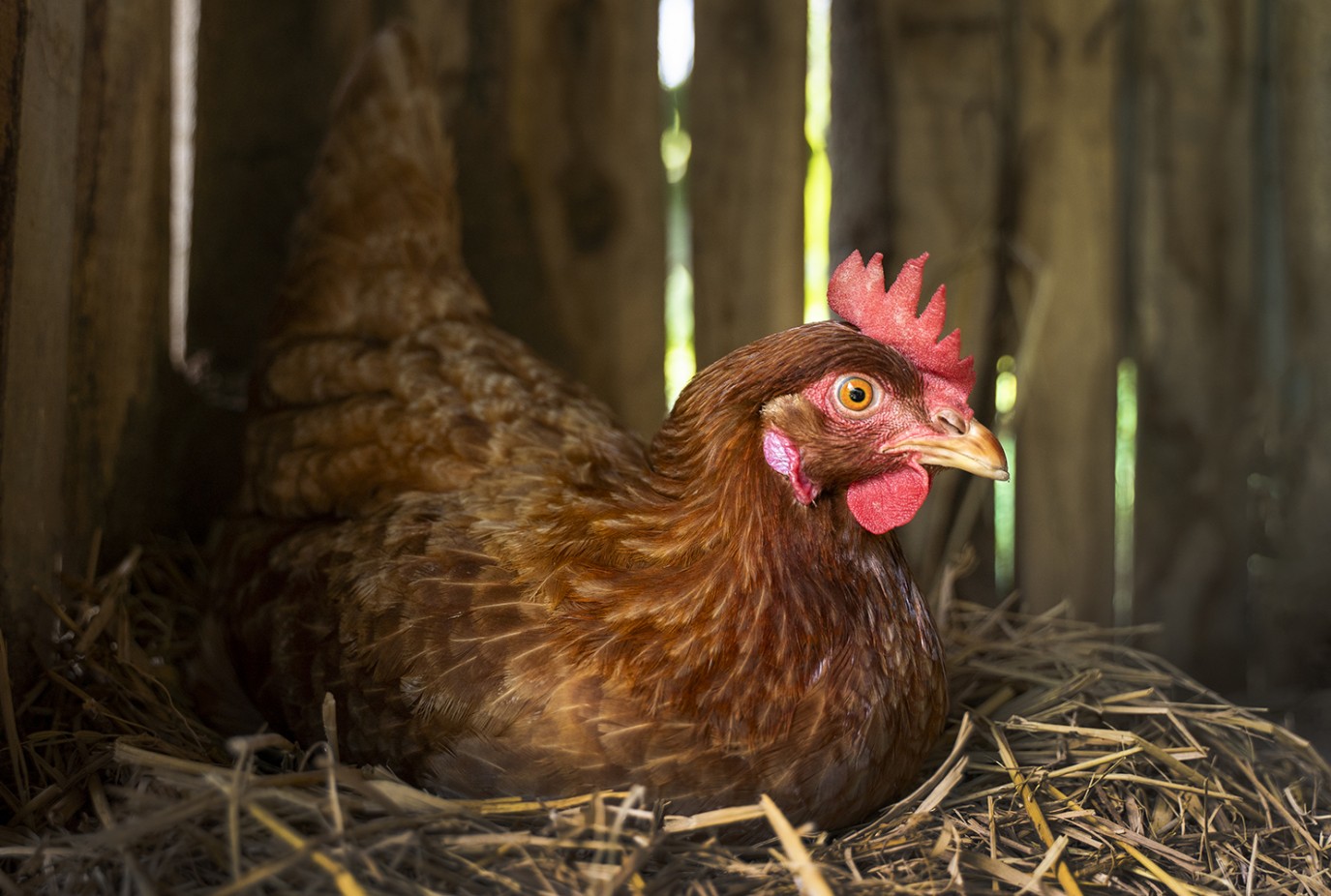Why not have some golden egg laying Chickens in your backyard?

This seems like a good time to talk about getting a couple of chickens in your backyard to give you a couple of tasty eggs every day. It’s time to start transitioning to the good life, build some resilience in our lives, what better way than getting some chickens. What’s not to love about them? They’re pretty maintenance free. You feed them all your food scraps and supplement them with a little chicken feed and in return they give you eggs.
As we’ve all experienced in the last few months buying eggs has never been harder, a little rule change for happier chickens and the whole industry collapses despite a multi-year lead in for change.
You don’t need to have a huge yard to house a couple of chickens.
1. They need somewhere secure at night to call home. Look online or pop down to your local hardware store and you will find small chicken ‘coops’ for not too many bucks. If you’re handy with a hammer you can build one for next to nothing using scrap timber. Just make sure it’s draught free and watertight. It’s handy to be able to lock them up at night. They need somewhere to perch/roost at night off the ground. Put a shout out on the local ‘Queenstown Chicken Lovers’ facebook page to see if there are any unused coops in the district. While you’re there see if there are any chickens for sale or been given away.
2. They need a run. Chickens need an area to scratch around in. You might consider a mobile run that you move daily to weekly. Or have a permanent area that you’ve fenced off. This doesn’t have to be at the expense of lawn space. Why not fence an area of native planting or an area that has some fruit trees planted. It can be tucked away.
3. Water. There needs to be a continuous supply. Either a simple unit that you refill weekly or plumb in a basic line to a water feeder.
4. Food. No need to ever worry about your food scraps again. Chickens are the ultimate composters. Create a zone where you feed them every time. You could dig out an area roughly 1.5mx1.5mx30cm deep. Fill it with wood chips or leaves generously. Now ‘All’ your food scraps get put here including bones, meat, fish etc.
Feed the chickens in this zone every time. Anything they don’t eat gets scratched into the deep litter to be composted down. Once a year dig out and put on your veggie garden and refill with fresh leaves or wood chips. Chickens are going to need to be supplemented with some chicken pellets or grain. I find the best investment I ever made was the ‘the Grandpa feeder’. It has storage for 10 to 20 kg of chicken feed. The chickens step on the step and the lid opens for them to feed. Great if you need to go away. I’ve had mine for over 20 years and it’s still going strong. You can supplement their food with living plants. Plant out a row of silverbeet seedlings and put some chicken netting over them in an arc 40cm high and wide. Allow the silverbeet to do its thing. As it eventually grows poking out the mesh the chickens can nibble away without completely destroying the plants creating a continuous supply of greens. When their run is under fruit trees they clear up any fallen fruit.
5. Protection from predators means good fencing especially at night having the ability to lock them in for the night is key. Stoats and ferrets will come looking at night. They are brutal and will wipe your chickens out in a single night if the coop isn’t locked down. Other predators are visiting dogs. Even if your visitors claim their dog is chicken friendly, don’t believe them it only takes 1 dog. Many dogs haven’t even seen a chicken. I once lost 3 chickens to one ‘chicken friendly’ dog. Not such an issue in urban areas but worth being aware of Falcons and Hawks. Generally not a problem, usually chickens are most vulnerable to these predators in the first week as they become familiar to their new surroundings. All though I did once have a Hawk come along every few days and take out one of my chickens each time. It was baffling I couldn’t work out who was killing my chickens till I caught the Hawk in the act.
6. Keeping them healthy with a diverse diet of food scraps and pellets. You can add a little apple cider vinegar to their water. There are a few other ailments to keep an eye out for like lice, that’s where ‘Queenstown chicken lovers’ community can be useful to ask questions and get advice.
7. Breeds. There’s a lot of mixers out there and they will lay eggs to their heart’s content. Top egg laying breeds are the commercial breeds ‘Hylines’ and ‘Shavers’. These chickens are incredible egg laying machines. They can cost around $10-25 per chicken. Then there’s the heritage breeds, there are some beautiful breeds out there. They come in all shapes and sizes. Some are dedicated meat breeds, some are dual purpose meat and eggs and then there’s some that are dedicated egg laying. Cost per chicken jumps right up and it can be hard to find a particular breed you’re after locally. You may have to venture via Trade Me to Southland or Canterbury. There are many ‘Chicken fanciers’ on Trade Me selling chickens with names such as Orpingtons, Wyndacots, Faverelle, Silkies and so on. You can take it a step further and buy an incubator and buy eggs in. This is a big step as you will need heat lamps etc, once the chick’s hatch. The best chickens to buy when starting out are Pullets, they are about 4-6 months old. These are young chickens that are nearing the start of their egg laying. They will lay all through their first winter. Most chickens stop laying over winter or have a much-reduced output.
8. Roosters are a no go unless you’re in a rural neighbourhood and you don’t have any neighbours nearby. I recall the kids at a local kindergarten being told their rooster had gone away to another home, when local residents ‘disappeared’ the dawn alarm clock.
If you’re friendly with your neighbours consider sharing the chickens and the chicken run with neighbours utilising dead zones on your fence line for the run. There are a few successful examples in the community where neighbours are making this work successfully.
Once you’re up and running, chickens are very easy and become super friendly. We had an old shaver we inherited from another family. She started getting out of her run every day and coming and hanging out with us. Eventually she’d jump up onto your lap and lay down while you were having a cup of tea.
Then there’s those glorious egg omelettes and egg Bennies that have never tasted so good with home grown eggs.
Dr Compost aka Ben Elms is a permaculture and gardening expert who’s been operating in the unusual Central Otago climate for over 20 years. Funded by QLDC and delivered by Wanaka Wastebusters, the Dr Compost project aims to reduce organic waste going to landfill. Got a question? Check out @drcompost on Facebook or benelms.com








